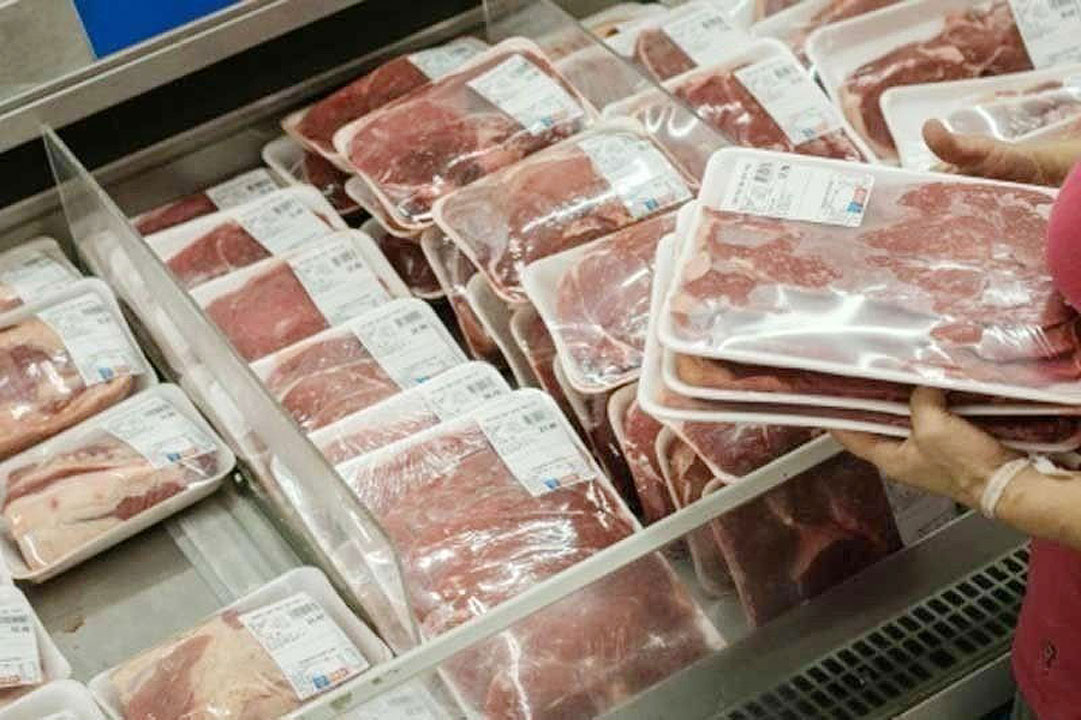THE MEAT and hog industries can still influence the final form of a policy governing pork imports when the Department of Agriculture consults them on a proposal to expand the import quota, officials said.
“We will go through the same process in considering the proposal of NEDA, as per Secretary William D. Dar,” Assistant Secretary Noel O. Reyes said in a text message. “That entails consultations with industry stakeholders.”
The National Economic and Development Authority (NEDA) proposed to extend an expanded pork import quota — known as the Minimum Access Volume (MAV) — to next year, due to rising pork prices.
The government had temporarily expanded the pork MAV in May via Executive Order (EO) 133, citing inflation pressures due to the hog shortage resulting from the African Swine Fever (ASF) outbreak.
The EO expanded the MAV quota to 254,210 metric tons (MT) from 54,210 MT.
Industry representatives said rather than increasing imports, the government needs to focus on supporting producers to ensure adequate supply.
“We strongly oppose the plan to extend the MAV plus,” Pork Producers Federation of the Philippines President Rolando E. Tambago said in an e-mail.
“It is already very clear that the twin EOs 133 and 134 did not address its intention to reduce pork retail prices since their implementation. In fact, they did not (result in) tangible benefits to consumers, supposedly via low retail pork price, it’s only the importers and traders who gained from it,” he added.
While EO 133 expanded the MAV quota, EO 134, another measure intended to expand supply and keep prices under control, lowered tariff rates for fresh, frozen, or chilled pork imports.
Meat price inflation was 10.7% year on year and 2.4% month on month in November, according to the Philippine Statistics Authority.
Month on month, November retail prices for bone-in pork rose by P2.30 to P54.00 at a number of regional trading centers.
“It’s already eight months into the EO. If you look at the justification (that) this will lower the prices of pork, hindi nangyari obviously (it obviously did not happen),” Jayson H. Cainglet, executive director of Samahang Industriya ng Agrikultura (SINAG) said in a phone interview. “They’ve lost almost 4 billion in revenue (from foregone tariffs) … Sa side mismo ng government, may pag-admit na may revenue loss (the government is itself admitting that it has lost revenue),” he added.
Foregone revenue was estimated at P3.67 billion between April 9 and Dec. 10 due to the lower pork tariffs, according to customs data.
Mr. Tambago said that if the government wants to address high pork retail prices, “the sustainable way of doing it is to ramp up local pork production. Importation is not a viable solution to the problem.”
The agricultural trade deficit in October was driven by import growth of 15.8% to $4.16 billion. The value of meat and edible meat offal imports accounted for 11.6% of overall agricultural imports, from 7.4% a year earlier.
“The industry is actually very capable of resolving the supply gap to satisfy the demand if only the government would give us that window of confidence through a long-term policy that favors local producers,” Mr. Tambago said.
“Take a look at the (National Meat Inspection Service) weekly (report) on cold storage warehouses in Regions III, IV-A, and the National Capital Region (NCR),” he said. “Why is the retail pork price in those areas still high? This means Filipino consumers still prefer to consume Pinoy pork. Note that those are only the areas where there is a huge supply gap due to effects of ASF.”
In the first week of December, the NMIS estimated that frozen pork in accredited cold storage facilities in Region IV-A amounted to 603.29 MT, including imports of 21,292.74 MT. In the NCR the equivalent amounts were 340.91 MT and 25,611.25 MT, respectively, while in Region III the totals were 313.69 MT and 22,549.97 MT.
Mr. Cainglet said the problem with pork is mainly on the demand side because of weakened consumer purchasing power and follow-on weakness in the institutional users of meat, like restaurants, which are reluctant to place large orders because dining out is still limited.
Mr. Cainglet said that the government should also look for ways to subsidize feed, as input costs continue to rise.
“Tumataas ang cost of production because tumaas ang presyo ng langis. Ang feeds, isang byproduct ng oil ’yan, at 50% ng cost of production ng livestock nasa feeds.” (The cost of production keeps getting higher because the price of oil is rising. Pig feed is a byproduct of oil, and 50% of the cost of production for livestock is spent on feed.)
Mr. Tambago urged the government to reconsider the extension and redirect funds to investing in the sector.
“If by default the policy of the government is always favoring importation, then the confidence of the industry to re-invest to increase production will be very low,” he said.
“By importing or lowering tariffs, you’re subsidizing foreign hog raisers,” Mr. Cainglet said. “Baliktad mo naman ’yung priority mo. The government’s priorities need to be reversed) Don’t incentivize importers.” — Luisa Maria Jacinta C. Jocson
